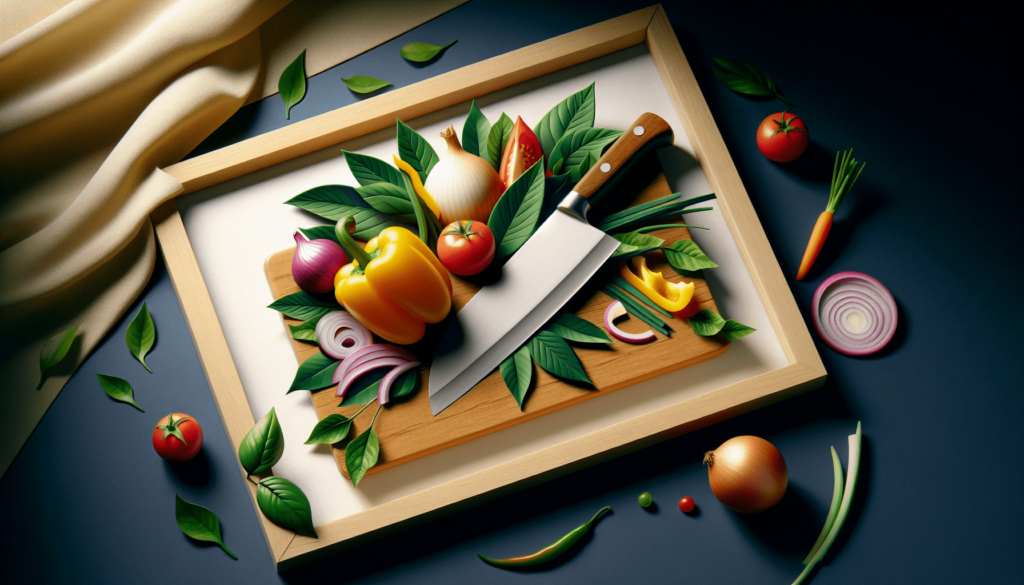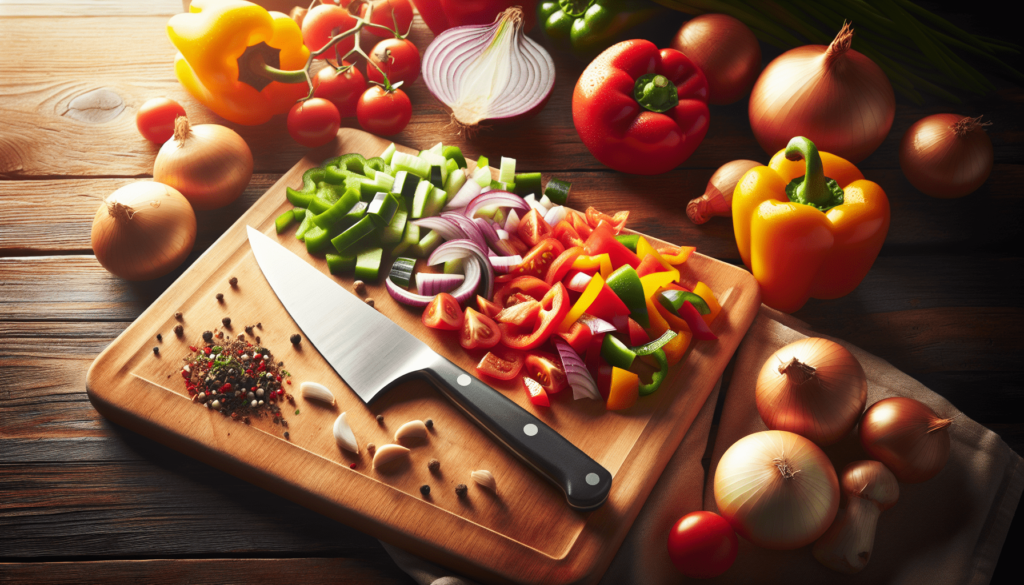How to Start Cooking with Confidence. Do you wish you could cook with confidence but feel overwhelmed by where to start? You’re not alone; many people feel intimidated by the kitchen, whether due to the endless possibilities of recipes or the fear of making mistakes. Let’s tackle this step-by-step to transform your apprehension into excitement.

Table of Contents
Introduction: Why Cooking Matters
Cooking isn’t just about making food; it’s about nourishing yourself, expressing creativity, and even bringing people together. In this guide, you’ll discover how to build your culinary skills from the ground up. We’ll cover everything from understanding basic ingredients to mastering essential cooking techniques. Let’s get started on your culinary journey!
Setting the Stage: A Brief History of Cooking
Before diving into the technical aspects, a bit of history can make you appreciate the art and science of cooking. Ancient civilizations used fire to transform raw ingredients into edible meals. Over centuries, techniques and ingredients evolved, leading to the diverse culinary landscape we enjoy today. Understanding this history can give you a broader perspective on the hows and whys of cooking methods.
Current Trends in Cooking
Today, cooking trends are heavily influenced by global cuisines, health consciousness, and sustainable practices. The popularity of home cooking has surged, with many people sharing recipes and techniques online. Embrace these trends and make your cooking journey both exciting and nutritious.
Building Your Confidence: Key Concepts and Definitions
Cooking jargon can be intimidating, but once you understand the basics, you’ll find it easier to follow recipes and experiment on your own.
Common Terminology
- Al Dente: This Italian term refers to cooking pasta until it is firm to the bite.
- Sauté: Cooking food quickly in a small amount of oil over high heat.
- Simmer: Cooking food gently below boiling point.
Essential Tools and Equipment
The right tools can make a world of difference. Here’s a quick rundown:
| Tool | Purpose |
|---|---|
| Chef’s Knife | Versatile knife for most chopping tasks |
| Cutting Board | Surface for cutting and prepping |
| Saucepan | Cooking sauces, boiling pasta, etc. |
| Baking Sheet | Baking, roasting |
| Measuring Cups/Spoons | Accurate measurement of ingredients |
Getting Started: Basic Cooking Techniques
Learning the Basics: Boiling, Sautéing, and Baking
Boiling: A fundamental method, great for cooking pasta, potatoes, and blanching vegetables. Fill a pot with water, add salt, and bring it to a rolling boil before adding your ingredients.
Sautéing: Ideal for vegetables, meats, and quick meals. Heat a pan with a bit of oil, and add your ingredients. Stir frequently until they are cooked to your preference.
Baking: Perfect for desserts, casseroles, and roasted dishes. Preheat your oven to the specified temperature and follow the recipe precisely.
Understanding Ingredients
Different ingredients bring unique flavors and textures to your dishes. Fresh ingredients usually offer the best flavor, but frozen and canned options can be convenient and nutritious too.
Spices and Seasonings
Spices and seasonings are essential for enhancing the flavor of your dishes. Start with basics like salt, pepper, garlic powder, and paprika, and gradually introduce more exotic spices as you become more comfortable.

Practical Tips for New Cooks
Meal Planning and Prep
Plan your meals ahead of time to avoid last-minute stress. Make a shopping list based on your meal plan, and prep ingredients in advance to save time during the week.
Following Recipes
When starting, follow recipes closely. They are designed to guide you through each step, ensuring a successful outcome. As you gain confidence, you’ll find yourself improvising and customizing recipes to suit your taste.
Practicing Patience
Cooking can be stressful when you are in a hurry. Take your time, enjoy the process, and remember that practice makes perfect.
Real-Life Examples: Easy Recipes for Beginners
Example 1: Simple Spaghetti Carbonara
A classic Italian dish that’s both delicious and straightforward.
Ingredients:
- Spaghetti
- Eggs
- Parmesan cheese
- Pancetta or bacon
- Garlic
- Salt and pepper
Instructions:
- Boil the spaghetti until al dente.
- In a separate pan, cook pancetta or bacon until crispy.
- Mix eggs and grated Parmesan cheese in a bowl.
- Add the cooked spaghetti to the pancetta and mix well.
- Remove from heat, and stir in the egg and cheese mixture.
- Season with salt and pepper, and serve immediately.
Example 2: Roasted Vegetables
A versatile side dish that pairs well with any main course.
Ingredients:
- Assorted vegetables (carrots, bell peppers, zucchini, etc.)
- Olive oil
- Salt and pepper
- Your favorite herbs (rosemary, thyme, etc.)
Instructions:
- Preheat your oven to 400°F (200°C).
- Chop the vegetables into uniform pieces.
- Toss them with olive oil, salt, pepper, and herbs.
- Spread them on a baking sheet in a single layer.
- Roast for 20-30 minutes or until tender and slightly browned.
Understanding Different Perspectives on Cooking
Home Cooking vs. Eating Out
Cooking at home is almost always cheaper and healthier than eating out. It allows you to control ingredients and portions, leading to better nutritional choices. However, don’t discount eating out entirely; it can be a source of inspiration and a delightful culinary experience.
Traditional vs. Modern Techniques
Traditional cooking methods, passed down through generations, often prioritize flavor and authenticity. Modern techniques, influenced by science and technology, aim for efficiency and precision. Both have their merits, and as a cook, you can draw from both to suit your needs.
The Impact of Learning to Cook
On Your Health
Cooking your meals can significantly improve your diet by reducing processed foods and controlling portions. It’s an excellent way to incorporate more fruits, vegetables, and lean proteins into your meals.
On Your Wallet
Eating out frequently can add up. Learning to cook budget-friendly meals can save you a substantial amount of money. Buy seasonal produce and look for sales to stretch your budget even further.
On Your Relationships
Cooking for others is a profound way to show love and care. It brings people together, whether for a regular family dinner or a special occasion. Sharing a meal you’ve prepared gives you a sense of accomplishment and joy.
Future Directions in Cooking: Trends and Implications
Technology in the Kitchen
With the rise of smart kitchen appliances, cooking is becoming more accessible. From smart ovens that ensure perfect cooking times to apps that suggest recipes based on ingredients you have at home, technology is making cooking easier than ever.
Sustainable Cooking
Sustainable cooking practices are gaining traction. This includes minimizing food waste, using locally sourced ingredients, and embracing plant-based meals to reduce environmental impact.
Predicting Future Trends
Expect to see more fusion cuisines as globalization continues to influence food culture. Plant-based and lab-grown meats will likely become mainstream, offering more ethical and sustainable choices.
Conclusion: Embrace Your Culinary Journey
To summarize, cooking is an enriching skill that benefits your health, finances, and relationships. It’s a blend of art and science, rooted in history and evolving with trends. The more you practice, the more confident and skilled you’ll become.
If you’re just starting, remember that every great cook was once a beginner. Try out simple recipes, familiarize yourself with basic techniques, and don’t be afraid to make mistakes. Cooking is a journey, not a destination.
What do you think your first meal will be? Start small, enjoy the process, and before long, you’ll be cooking with confidence and joy.
Looking to expand your culinary knowledge further? Check out our articles on advanced cooking techniques and meal planning to continue your growth.
